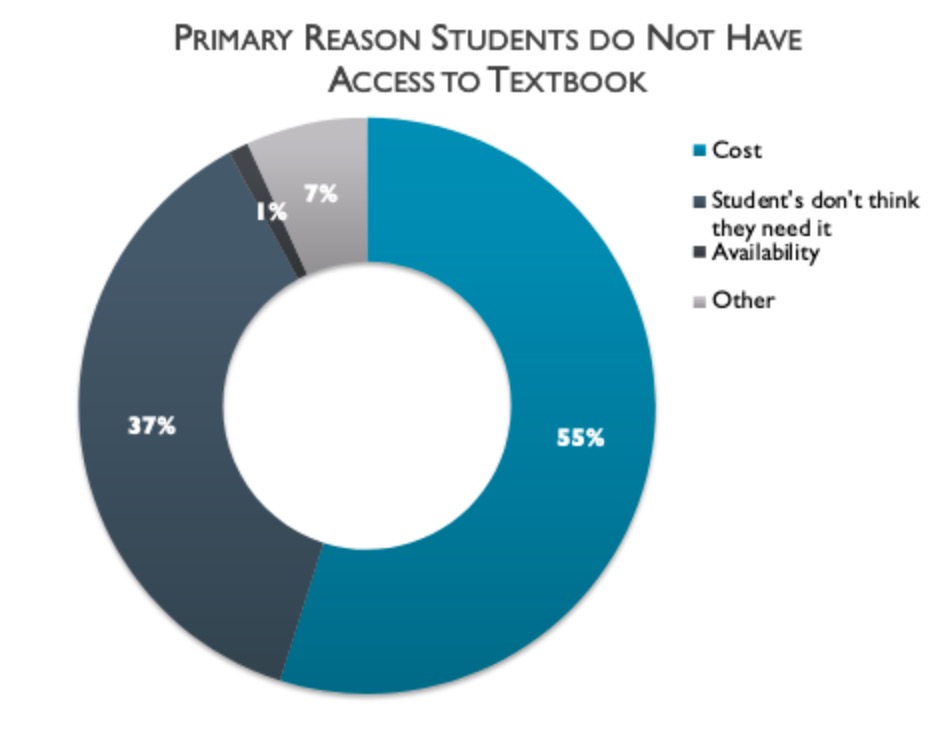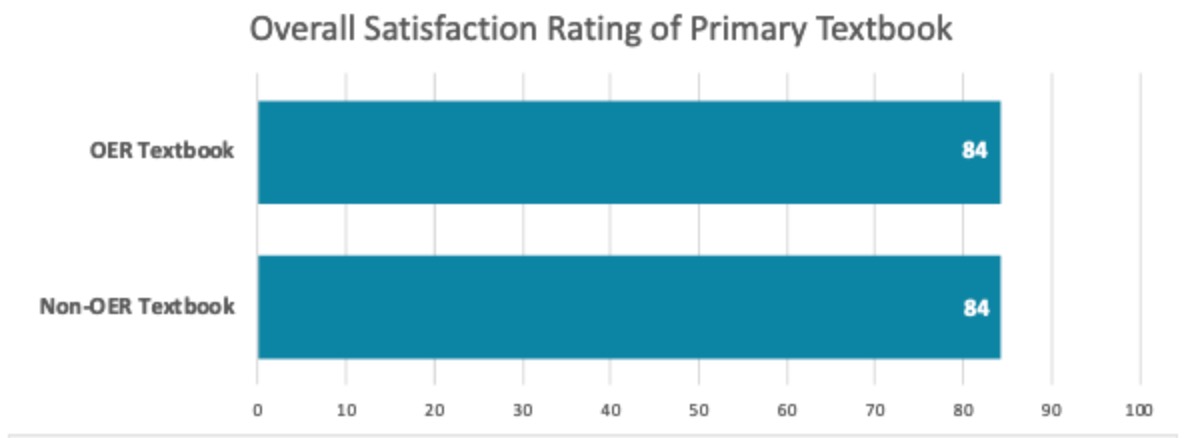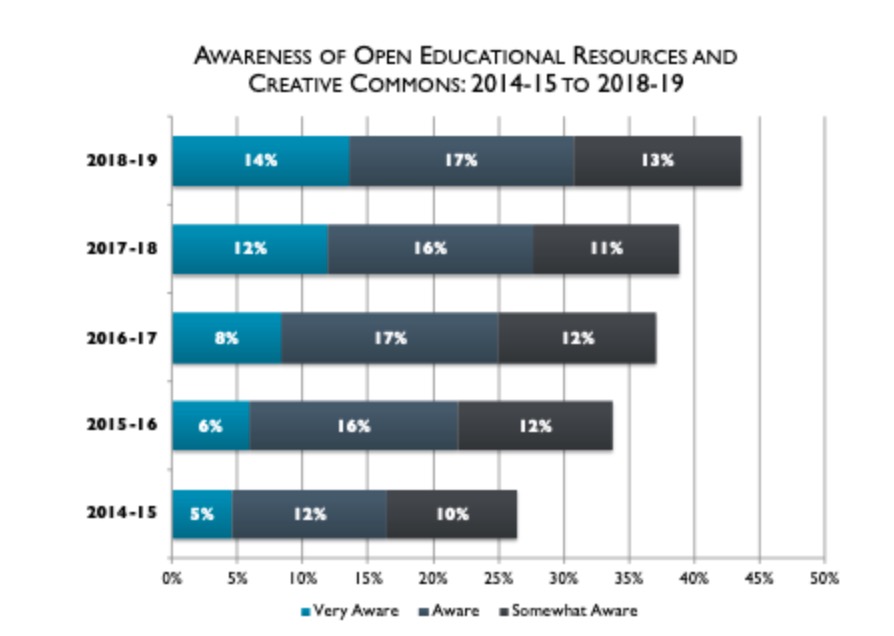New Report: “Inflection Point: Educational Resources in U.S. Higher Education, 2019”
From the Executive Summary of the Bayview Analytics Report:
The model of course material distribution and selection is at an inflection point. After decades of only minor changes to how faculty discovered and adopted textbooks for their courses, the past five years has been marked by substantial changes:
- There is a growing acceptance (even preference) by faculty for digital materials.More faculty now prefer digital over print, and they report that their students are likewise accepting of digital materials.
- Faculty, chairpersons, administrators, and even entire college systems are increasingly concerned about the cost of materials for their students. This is driven by historically rising prices and the emergence of lower-cost alternatives, resulting in a growing awareness of cost as an issue at multiple levels within the institution.
- An understanding on the part of faculty that many of their students are going without the required text. This is reported as primarily a cost concern, but also because the students are not convinced that they need the materials.
- The introduction of new publishing and distribution models by commercial publishers, the most important being “inclusive access,” has substantially altered the options available to faculty. The rapid evolution of the course materials market has had a significant impact on the future of open textbooks.
The past five years have seen many positive signs for the growth of open textbooks:
- Faculty who have adopted Open Educational Resources (OER) rate the quality of OER as equal to that of commercial alternatives.
- Awareness of licensing and OER continues to grow every year.
- Institutional and system-level OER initiatives appear to be effective in increasing OER adoption rates.
There have also been a few negative signs for open textbooks:
- Faculty do not think that they need OER to achieve the flexibility of the 5Rs (Retain, Revise, Remix, Reuse, and Redistribute). The vast majority of faculty are using commercial materials in ways that mirror the 5Rs of OER.
- A growing list of alternative material distribution options adds confusion to the “open” message. Many of the options are being presented in the same light as OER, and highlight many of the same advantages.
- While familiarity with the term OER has now reached a majority, many faculty remain unfamiliar with the licensing or how to use these materials, and current rates of growth will not change this for many years.
Direct to Full Text Report
51 pages; PDF.
See Also
Statement from SPARC: “Annual OER Survey: Momentum Continues to Grow as Landscape Evolves”
Media Coverage
“A Looming Challenge for OER?” (via Inside Higher Ed, by Lindsay McKenzie)
Filed under: Companies (Publishers/Vendors), News, Publishing
About Gary Price
Gary Price (gprice@gmail.com) is a librarian, writer, consultant, and frequent conference speaker based in the Washington D.C. metro area. He earned his MLIS degree from Wayne State University in Detroit. Price has won several awards including the SLA Innovations in Technology Award and Alumnus of the Year from the Wayne St. University Library and Information Science Program. From 2006-2009 he was Director of Online Information Services at Ask.com.





